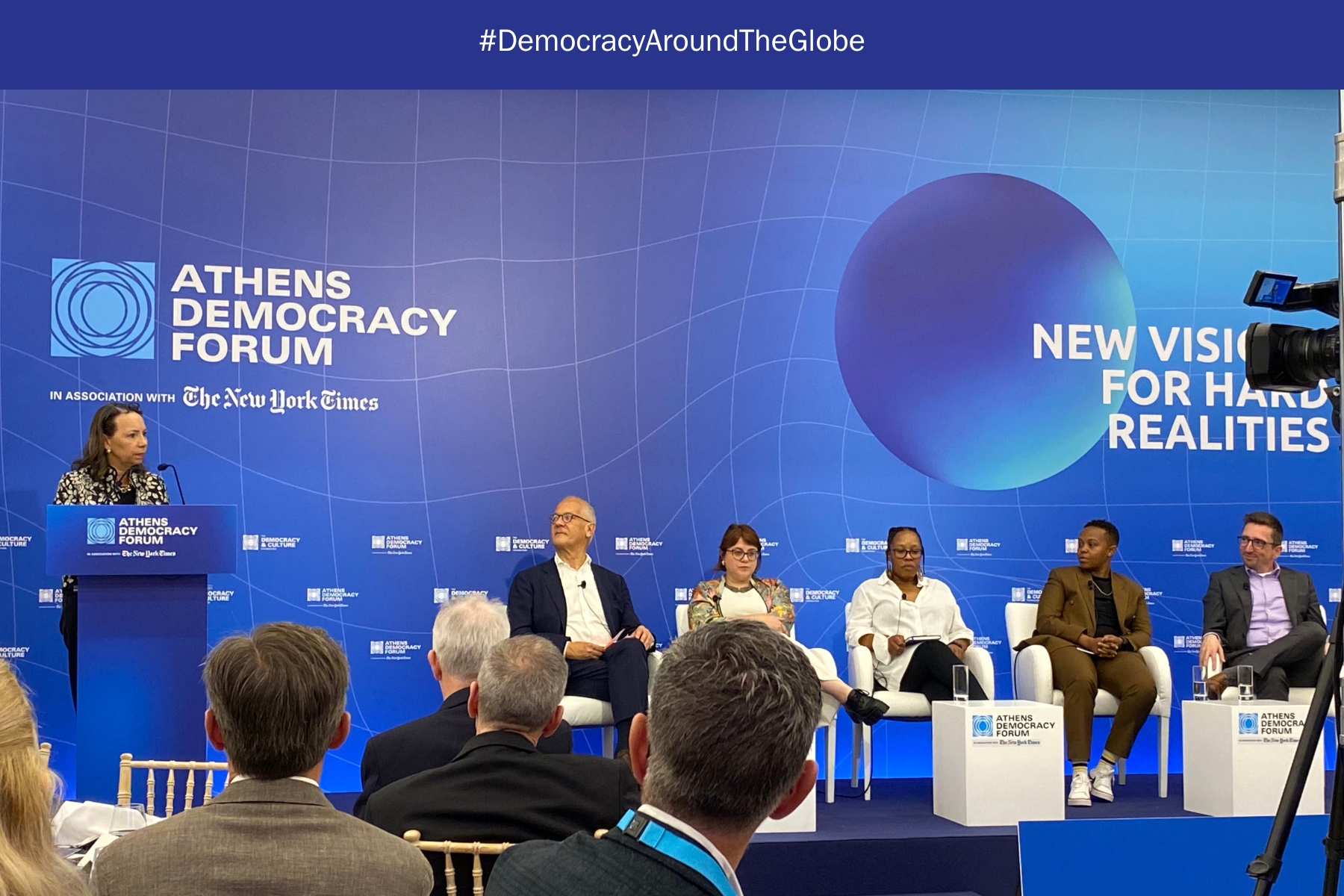Is Project 2025 a Roadmap for Media Repression?

By Joel Simon
When Donald Trump was president, he lashed out at the media, responded to critical coverage by describing it as “fake news,” and called journalists “the enemy of the American people.” Project 2025 suggests the possibilities of media suppression should Trump be elected to a second term.
The Mandate for Leadership is a 900+ page guide that serves as one of the four “pillars” of the Heritage Foundations’ Project 2025. The “presidential transition project” was created by a network of conservative policymakers and intellectuals who seek to influence the next Republican administration. Although Trump has tried to distance himself from Project 2025, the mandates within Project 2025 would likely have some measure of success should he prevail in November.
Project 2025’s Vision for the Media
First and foremost, the authors of Project 2025 believe that media access to the administration is a privilege rather than a right. This protectionist view is established early in the Mandate: “No legal entitlement exists for the provision of permanent space for media on the White House campus, and the next administration should reexamine the balance between media demands and space constraints on the White House premises” (29). It’s hard to believe that this vision will not ripple across the rest of the administration. A journalist’s critical role is that of a watchdog who documents government activities and accesses public information. Any effort to restrict these actions undermines democratic principles.
Muting the Voice of America
Chapter 8 of the Mandate is titled “Media Agencies” and specifically targets free, reliable, public news sources. The advisors who drafted Project 2025 want to reign in Voice of America (VOA), which, since the Cold War, has provided people around the world with accurate and timely news and information. While VOA is funded by Congress, it operates independently, which means it often reports critically on US policies. Consistent with an overall policy of reducing support for international democracy, chapter 8 of the Mandate proposes that VOA and other Congressionally funded US media be consolidated, reduced, and brought more formally under control of the State Department (243–244).
Eliminating the Corporation for Public Broadcasting
Also within chapter 8 (246–248), Project 2025 calls for defunding the Corporation for Public Broadcasting (CPB), which channels resources allocated by Congress to PBS and NPR stations around the country, many of which reach underserved communities. Defunding the CPB has been a long-standing goal of the conservative movement (246). According to Project 2025, “Cutting off the CPB is logistically easy. . . . The 47th president can just tell the Congress that he will not sign an appropriations spending bill that contains a penny for the CPB” (247).
A Triple Threat for Media Freedom
It’s hard to say how personally committed Trump is to any of these goals, but his animus toward the media is well established and could shape his behavior in a second term. In his first term as president, Trump pushed the Justice Department and the FBI to investigate journalists who published leaked information. Such retaliatory tactics could occur again during a second term. Project 2025 proposes to remove limits on retaliation by eliminating protections for civil servants thereby allowing the president to appoint loyalists to head agencies that have traditionally been nonpartisan. A president valuing personal loyalty over professional competence would no longer face any institutional resistance.
Under Project 2025, a president with antimedia impulses could fuse the conservative policy agenda with the strengthening of executive power to produce a triple threat for media freedom. Journalists and media organizations need to prepare for the possibility of working in a considerably more adversarial environment in which their rights and reputations are under constant attack. The media, for all its flaws, has remained a bulwark against abuses of power and an engine for accountability. Efforts to curtail and undermine the journalists’ role will weaken American democracy.
Joel Simon is the founding director of the Journalism Protection Initiative at the Craig Newmark Graduate School of Journalism at CUNY.
From Many, We is a Charles F. Kettering Foundation blog series that highlights the insights of thought leaders dedicated to the idea of inclusive democracy. Queries may be directed to fmw@kettering.org.
The views and opinions expressed by contributors to our digital communications are made independent of their affiliation with the Charles F. Kettering Foundation and without the foundation’s warranty of accuracy, authenticity, or completeness. Such statements do not reflect the views and opinions of the foundation which hereby disclaims liability to any party for direct, indirect, implied, punitive, special, incidental, or other consequential damages that may arise in connection with statements made by a contributor during their association with the foundation or independently.








